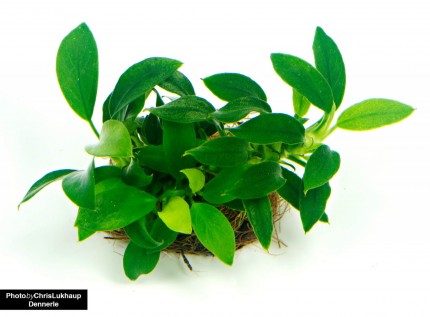incl. VAT plus shipping costs
Currently not available
Delivery only innh. Germany and Austria possible.
Switch to the German store
- Item no: 28970
Fast delivery times
All products are in stock with us!14 years of breeding experience
Let our team of experts advise you!High customer satisfaction
from over 3,000 reviews "| Water values: | medium hard to hard |
| Aquarium size: | 100 l (approx. 80cm) |
| with crabs?: | No |
| Temperature: | 20-28 °C |
| Pelvic region: | Everywhere |
| Feature: | Colorful |
| Visual effect: | interesting body shape |
| with fish?: | Yes, with peaceful fish |
| Origin: | Central America |
| Planting possible?: | conditional* (see description) |
| Fish group: | Tooth carp |
| Final size: | 8-12 cm |
| Breeding: | medium |
| Diet: | omnivorous - omnivorous |
| with snails/shells?: | Yes |
| with dwarf crabs?: | Yes |
| with shrimps?: | with dwarf shrimps, offspring is eaten |
| Difficulty: | 1 - Simple |
| Behavior: | Normal |
| with large crabs?: | No |
| Age Expectancy: | 3-5 years |
The Koi Kohaku Lyra Swordtail Xiphophorus helleri is the veil form of the Koi Kohaku Swordtail. These particularly impressive representatives of the live-bearing toothcarps originate in their original form from Central America and South America, where the wild swordtails live in fast-flowing, plant-rich rivers. Sometimes they can be found as far as the mouths of rivers, where the water already has a certain salt content.
Here you buy a mixed sex group of the attractive and beautiful swordtail Koi Kohaku Lyra.
The Koi Kohaku Lyra Swordtail has a silvery white base color and a red-orange pattern that resembles the markings of a Koi carp. In males, the lower portion of the caudal fin is extended to form a sword, which may be red or silvery translucent. In swordtails, late males may occur that look like a female for an extended period of time, but then eventually develop a gonopodium. Also, in the Lyra form, both males and females have a veil-shaped caudal fin. The rest of the fins may also be somewhat enlarged in the lyratail.
Males and females are about 12 cm long when fully grown, and the sword on males is also about 4 cm long. Please note: In male Lyratail swordtails the gonopodium is partially altered in shape, not all are fertile. However, Lyratail females reliably inherit the veiltail when mated to a "normal" Koi Kohaku Swordtail male.
Lyratail Koi Kohaku Swordtail females give birth to live fry and can also store male semen for an extended period of time when mated. Therefore, offspring can occur even in female-only groups. A female can release up to 150 fry in a litter, but the adult Koi Kohaku Lyra swordtails will readily snatch them away. However, in well-planted aquariums with many fine-feathered plants, the fry will find cover, so animals will always get through. The small swordtails are already 6-9 millimeters long at birth.
Swordtails like to interact as a school with conspecifics and should therefore really never be kept individually. Different colors and fin shapes are tolerated, so you can mix without hesitation. Swordtails need medium to hard water and really like a slight addition of salt to the aquarium water. A water temperature of 20-28 °C in the aquarium is optimal for Xiphophorus helleri "Koi Kohaku Lyra".
Swordtails are distantly related to guppies and closely related to platies; they may even interbreed with platies. Socialization of swordtails with other small to large peaceful fish in a community aquarium works very well, as does socialization with larger shrimp such as Amano shrimp or fan shrimp. Even keeping them with small dwarf crayfish species from the genus Cambarellus tends not to cause any problems for the swordtails. Smaller dwarf shrimp and especially the young of the shrimp, on the other hand, can end up in the mouth of the swordtails. In an aquarium with a lot of moss and other hiding places for shrimps and a well reproducing dwarf shrimp like Neocaridina or Sulawesi shrimps the socialization can be successful.
In the wild, algae and soft aquatic plants, small crayfish, mosquito larvae and other insect larvae, as well as worms and insects are on the menu of Xiphophorus helleri. Koi Kohaku Lyra swordtails love green food in the aquarium: algae, soft vegetables (tomatoes, zucchini, squash, over-boiled spinach leaves, dandelion or nettle leaves) - and also soft aquarium plants. These tend to be spared more when vegetables and over-scalded soft greens are added to the diet. Swordtails will also happily eat flake food for omnivorous aquarium fish or special food granules for livebearers. Frozen food or live food such as grindal, water fleas or mosquito larvae complete the diet of Koi Kohaku Lyra swordtails.
| Scientific name: | Xiphophorus helleri |
| German name: | Koi Kohaku Lyra Swordtail |
| Difficulty level: | for beginners |
| Origin/distribution: | South America |
| Coloration: | silver-white ground color with red-orange koi pattern, sword in males red or silver-white transparent, caudal fin veil-like enlarged |
| Age expectancy: | approx. 3 years |
| Water parameters: | GH 12 to 30, KH 5-20, pH 7 to 8.5, temperature 20 to 28 °C |
| Tank size: | from 80 l |
| Food: | Omnivorous, in addition to flake food and granulated food, also likes frozen food or live food and soft vegetables or greens |
| Breeding: | very easy |
| Behavior: | very peaceful |
| Group size: | at least 10 |
| Additional information: | <a href="https://www.garnelio.de/blog/garnelen/welche-fische-vertragen-sich-mit-garnelen="_blank">Which fish get along with shrimp?</a>, <a href="https://www.garnelio.de/en/blog/aquarist-tips/socialization-of-fish-with-dwarf-crabs" target="_blank">Association of fish and dwarf crayfish</a>, <a href="https://www.garnelio.de/blog/krebse/vergesellschaftung-von-fischen-und-grossen-flusskrebsen" target="_blank">Association of fish and large crayfish</a></td> </tr> </tbody></table>
Customer questions and answers Discover now Entdecke die Garnelio Welt! Garnelio gehört zu den größten Onlineshops für wirbellose Aquarientiere weltweit. Last viewed Shopware Agentur six-media.de |




























